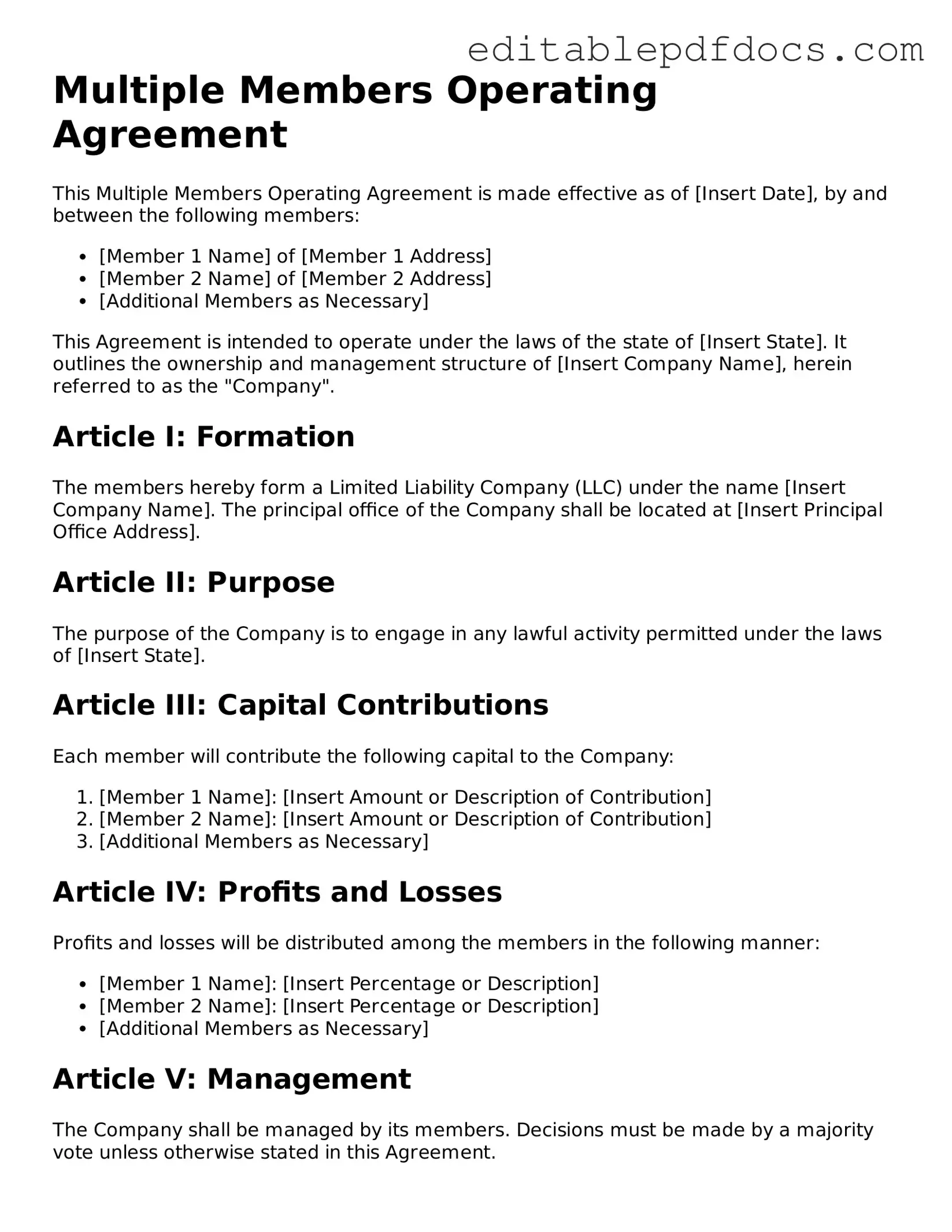When multiple individuals come together to form a business, having a solid foundation is essential for success. This is where the Multiple Members Operating Agreement comes into play. It serves as a vital document that outlines the roles, responsibilities, and rights of each member involved in the business. By clearly defining how decisions are made, how profits and losses are shared, and what happens if a member wants to leave or if new members join, this agreement helps prevent misunderstandings and disputes down the line. Additionally, it addresses important aspects such as management structure, voting procedures, and the process for resolving conflicts. With a well-crafted operating agreement, members can focus on growing their business, knowing that they have a clear roadmap to guide them through various scenarios. This document not only protects the interests of each member but also fosters a collaborative environment where everyone can thrive.
